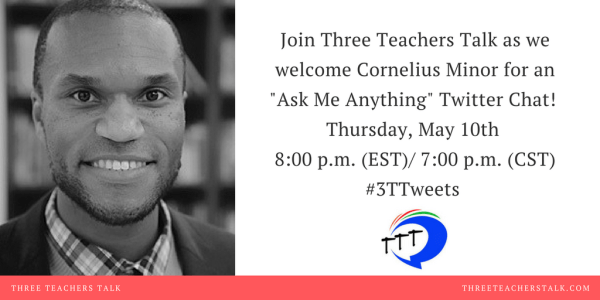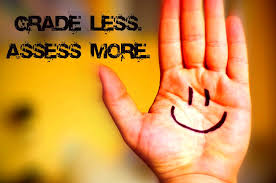
Believe me when I say I understand. Completely. I think many other teachers who took off the old shoes of making all the choices in their English classes and tiptoed, stomped, or danced into workshop instruction understand, too. Sometimes we are the only one hearing the music.
This was me most of the time.
Of course, working with colleagues in highly functioning PLC’s is advantageous. If we’re lucky, we’ve been in a few grade level teams, or even full departments with colleagues who embrace the choice and challenge readers-writers workshop offers and collaborate well. Other times we have to stick with our knowledge of what works best for growing readers and writers and make our own instructional choices, based on what we know is best for the students relying us in our own classrooms. It’s always our own students who matter most.
So how do I do workshop on my own without other colleagues teaching this way?
Here’s the advice I got when I asked a similar question to someone with a whole lot more experience than me in all things authentic reading and writing instruction: Nod your head a lot, and then close your door.
That’s pretty much what I did for the first eight years when I was figuring out how to manage a classroom library, give students choice in the books they read, hold them accountable in some way for their reading, get them writing more (and better), using mentor texts, conferring semi-regularly, and trying not to lose my mind when I’d go to team meetings and hear “I’m teaching ________ (insert title from the canon) and making students do study questions, along with these specific annotations. Do you want a copy of my test over the book?” Thanks by no thanks.
We teach readers, not books. And maybe it’s just me, but when I hear teachers say “I make my students do ____”, I kind of cringe. Study questions, annotations for all (done with a teacher’s specific rules for notes instead of the reader’s own rules), and tests over books: Sandpaper on teeth.
When I shifted my instruction to include choice, student engagement soared. I was converted, and I hungered for more ways to fully move into workshop instruction. But at the time, I was the only convert on my campus. I was lonely there.
However, I had company outside my school. Everyone who determines to make this shift does. You may just have to find it.
First off, there’s this blog. I started it with two brilliant teachers, Heather and Molly, I met at a summer institute of the North Star of TX National Writing Project, a site of National Writing Project. We wanted a place to write about how we applied our learning from our institute with our students, and we wanted a space that helped us stay connected. I was teaching at a Title I high school in a district just north of Dallas; Molly had just moved to a high school with a focus on project-based learning in Longview; Heather taught middle school in a district east of Ft. Worth. (If you know north TX, you know we spanned a distance geographically.) I tell you this history for a few reasons:
The National Writing Project advocates for authentic writing instruction, and it is one of the best networks of educators, willing to collaborate and share, I know. If you can link to a site near you, you will never do this work alone.
Three Teachers Talk has grown as my learning about workshop instruction has. Heather and Molly moved in exciting career directions different than mine, and at times this blog has really been one teacher talking as I tried to figure things out. (Note: Writing helps us figure things out.) Then, when I attended the University of New Hampshire Literacy Institute and took a two week class taught by Penny Kittle, and learned with Shana, Erica, and Emily, a similar blog-writing collaboration happened.
We started writing regular posts here called Our Compass Shifts because we were all working to shift our thinking about instruction and apply the learning from Penny’s class with our own readers and writers. Our teaching souls clicked. The Modern PLC. Emily and Erica wrote with us for awhile, but like Heather and Molly they moved on to other good things. We remain friends, but Shana — Shana remains as Diana exclaims of Anne in Anne of Green Gables, my “bossom friend. A bosom friend—an intimate friend, you know—a really kindred spirit to whom I can confide my innermost soul.”
To continue improving, growing, striving to do right by our students, I think we all need at least one bossom friend. I’ve got two in Shana and Lisa, two of the other admins on this blog. (Angela, you’re up-and-coming.)
I had to find them though. I couldn’t keep my classroom door shut and not step in to learning opportunities that helped me grow. Growing takes action.
So how do I do workshop on my own without other colleagues teaching this way?
Seek out connections with others who are making workshop work. All of the contributors on this blog have been where you are. Read their posts. Leave comments. Ask questions. Email me directly if you can’t find answers amy@threeteacherstalk.com. Like everyone else in the teaching world, I’m busy, but I will do my best to help. (And your questions may turn into blog posts. That’s how I met the amazing Lisa Dennis.)
Join a network of passionate educators on Twitter. There’s chats for you. #TeachWrite #DistruptTexts #buildyourstack #3TTworkshop #titletalk #NerdyBookClub #APLitchat #teachlivingpoets all come to mind. So many teachers moving the work of choice and challenge — and equity — forward. If you are new to Twitter and don’t know who to follow, follow us @3TeachersTalk; then, check out who we follow — educators like you.
Read books by those who’ve built a movement, and join in on discussions. Some of our favorite teacher-writers are active on Twitter, and they share brilliant ideas regularly. Thomas Newkirk, Tom Romano, Penny Kittle, Kelly Gallagher, Linda Rief, Cornelius Minor to name a few.
Also, Shana put together a fabulous resource page here. It’s not exhaustive, but it’s a good start.
I know joining chats, reading books, and connecting online does not replace collaboration on a campus, but it does work to help us grow in our practice.
Just like my daughter has online friends who are in the #houseplantclub, and my sister has online friends who play Pokemon Go, teachers — eager to make workshop work for their students — can find the support they need to make this ever-important pedagogy of engaging students as they grow in their identity as readers and writers work.
Press on, my friends, we are here for you.
Amy Rasmussen calls herself a literacy evangelist –among other things. Wife to a lovely man, and blessed to be the mother of six and grandmother of seven (five of which are boys), she loves to read and teach and share ideas that just might make the world a little brighter — for everyone! Follow her @amyrass — and join the conversation around workshop instruction on the Three Teachers Talk Facebook page. Go here see other Q & A posts about Secondary Readers-Writers Workshop.



 By ditching homework students have more opportunity for self-reflection and practice without the pressure of having every piece of their work graded. Students take more risks and ask more questions, because there isn’t the fear of failure. For example, student practice work and homework becomes less about getting the right answer and more about the exploration of the process. In the day to day students are meeting in small groups, reflecting on learning using rubrics, and analyzing strong mentor models.
By ditching homework students have more opportunity for self-reflection and practice without the pressure of having every piece of their work graded. Students take more risks and ask more questions, because there isn’t the fear of failure. For example, student practice work and homework becomes less about getting the right answer and more about the exploration of the process. In the day to day students are meeting in small groups, reflecting on learning using rubrics, and analyzing strong mentor models. 







 I’m always fascinated by new writing genres, and
I’m always fascinated by new writing genres, and 